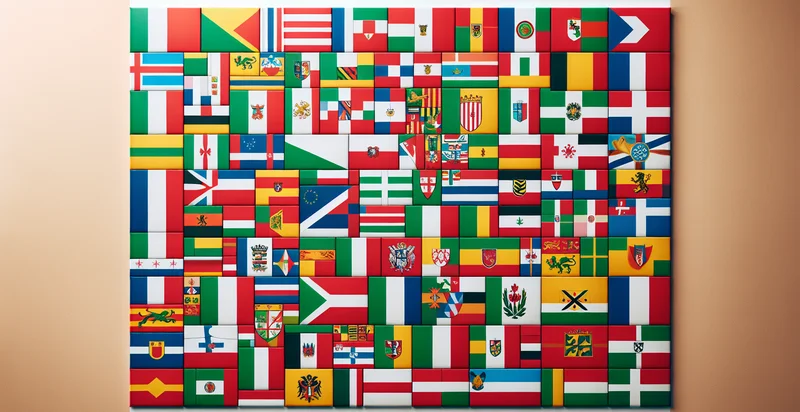Identify italian region flags
using AI
Below is a free classifier to identify italian region flags. Just upload your image, and our AI will predict what Italian region the flag represents - in just seconds.

Contact us for API access
Or, use Nyckel to build highly-accurate custom classifiers in just minutes. No PhD required.
Get started
import nyckel
credentials = nyckel.Credentials("YOUR_CLIENT_ID", "YOUR_CLIENT_SECRET")
nyckel.invoke("italian-region-flags-identifier", "your_image_url", credentials)
fetch('https://www.nyckel.com/v1/functions/italian-region-flags-identifier/invoke', {
method: 'POST',
headers: {
'Authorization': 'Bearer ' + 'YOUR_BEARER_TOKEN',
'Content-Type': 'application/json',
},
body: JSON.stringify(
{"data": "your_image_url"}
)
})
.then(response => response.json())
.then(data => console.log(data));
curl -X POST \
-H "Content-Type: application/json" \
-H "Authorization: Bearer YOUR_BEARER_TOKEN" \
-d '{"data": "your_image_url"}' \
https://www.nyckel.com/v1/functions/italian-region-flags-identifier/invoke
How this classifier works
To start, upload your image. Our AI tool will then predict what Italian region the flag represents.
This pretrained image model uses a Nyckel-created dataset and has 20 labels, including Abruzzo, Apulia, Basilicata, Calabria, Campania, Emilia Romagna, Friuli Venezia Giulia, Latium, Liguria and Lombardy.
We'll also show a confidence score (the higher the number, the more confident the AI model is around what Italian region the flag represents).
Whether you're just curious or building italian region flags detection into your application, we hope our classifier proves helpful.
Related Classifiers
Need to identify italian region flags at scale?
Get API or Zapier access to this classifier for free. It's perfect for:
- Geographic Marketing Analysis: This use case enables businesses in the tourism and hospitality sectors to tailor their marketing strategies by identifying the predominant Italian regions represented through their flags. By understanding the regional affiliations of potential customers, companies can create personalized campaigns and promotional offers that resonate with specific local interests.
- Educational Tools for Cultural Awareness: Educational institutions can utilize this function to develop interactive learning modules that teach students about Italian regions and their cultural significance through their flags. Engaging students with flag identification can foster a deeper understanding of geography, history, and cultural diversity in Italy.
- Social Media Engagement: Brands and influencers can leverage the flag identification function in social media campaigns to create interactive quizzes and contests related to Italian regions. This can enhance user engagement and foster community involvement, while also promoting awareness of Italian cultural heritage.
- Art and Design Analytics: Art galleries and design firms can use the flag identification function to analyze artworks and designs that incorporate regional flags. This data can inform curatorial decisions and marketing strategies, offering insights into trends related to regional pride and representation in various forms of art.
- E-commerce Personalization: Online retailers can apply the false image classification function to recommend products based on users’ regional affiliations. By identifying the Italian regions represented in users’ uploaded images, retailers can suggest items that reflect local styles, tastes, and cultural preferences, enhancing customer satisfaction and increasing sales.
- Event Planning and Theme Development: Event planners can incorporate this technology to curate regionally themed events or festivals that celebrate the diversity of Italian culture. By identifying guests' regional backgrounds through flag images, planners can customize decor, food options, and entertainment to create a more immersive experience.
- Historical Research and Analysis: Researchers and historians can utilize the flag identification function to study regional identities and their evolution over time through visual symbols. By analyzing the representation of each region’s flag in various contexts, scholars can gain insights into historical trends and cultural shifts within Italy.


